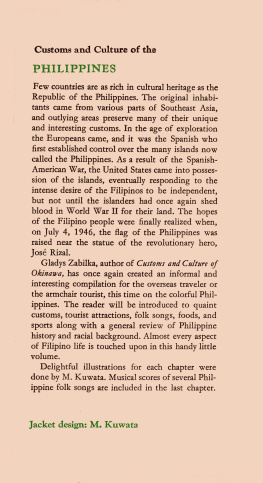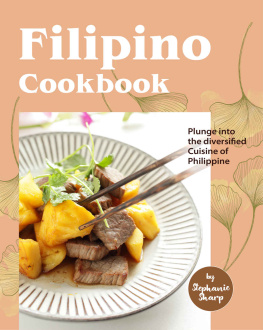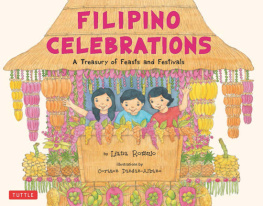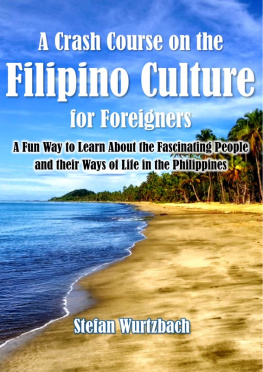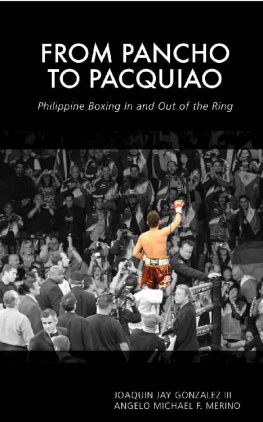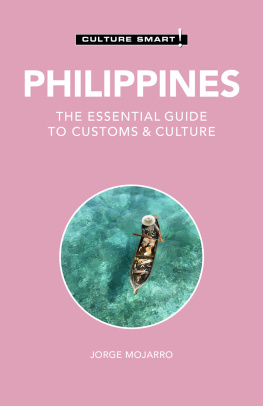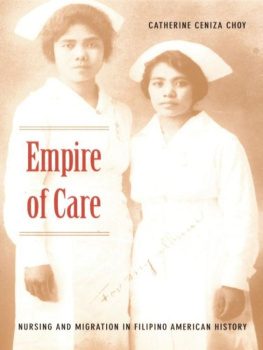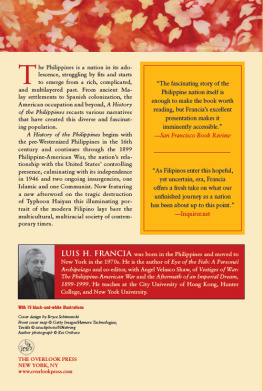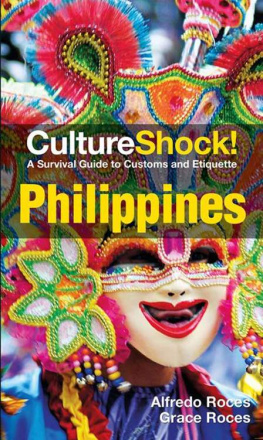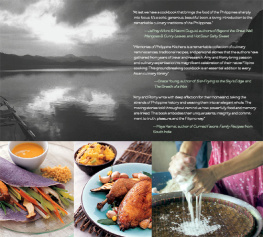CHAPTER I

THE ISLANDS
Brief History
In 1521, Magellan, a Portuguese sailing for the king of Spain, first saw the high mountains of the island of Samar and then landed on the island of Homonhon. He then sailed to the island of Limasawa, and finally to the island of Mactan, off Cebu, where he met his death in battle.
In 1543, Ruy Lopez de Villalobos, a Spaniard, named three islands the Filipinas after Don Felipe, the Crown Prince of Spain. When Don Felipe became Felipe, II of Spain, the rest of the islands became the Filipinasin English, the Philippines.
Under the Spanish rule of Miguel Lopez de Legaspi, the first governor-general, the Filipinos were mistreated. The islanders wanted reforms but none were forthcoming. A revolt was soon led by Andres Bonifacio against the Spanish. The revolt was soon repressed, but the feelings of the Filipino people were far from changed. During this revolt, the great scholar and patriot Dr. Jose Rizal was executed by a firing squad. This was December 30, 1896. Today a monument commemorates the independence leader's life and death for his country.
In 1898 the Spanish-American War broke out. On May 1 of this year the Spanish surrendered to Commodore George Dewey. The Philippines came under American jurisdiction as a result of the Treaty of Paris (1898). Shortly thereafter began what is known in the Islands as the Philippine-American War. The forces that desired independence surrendered to the United States forces in 1901. The country was under a military governor until 1935 when the Philippines became a commonwealth with Manuel L. Quezon as the first president. Many of the American policies came as a result of President William Taft, who had once served as Governor-General there. From 1941 to 1944 the Philippines were under Japanese control. Finally, on July 4, 1946, the hopes of the Filipino people were realized when the flag of an independent Philippines was raised only a short distance from the statue of Jose Rizal.
early names of the philippines
Different names that the Philippines were called at one time:
Mai by the Chinese traders in the 10th century.
Luzon Islands by the Japanese, or sometimes
Luzones or Lucones.
Archipelago of San Lazaro by the Spanish discoverers, led by Magellan because they were discovered on the Sabbath of St. Lazarus, March 16, 1521.
Vall Seu Parigne (Valley Without Peril) because of the hospitality and brotherly love shown by the natives for the Spaniards.
Islas del Poniente (Islands of the West) because Magellan came here by the westerly route from Spain.
Islands of the East by the Portuguese because they came to the Philippines by the easterly route.
Felipinas or Philipinas which the islands were named in 1542 by Rui Lopez de Villalobos in honor of the Prince. This was from the Spanish word Felipinas, from which the Americans derived the English word Philippines.
Facts About The Philippines
| statistics: |
| Area | 115,707 sq. mi. |
| Population | 22,265,300 |
| Number of provinces | |
| Number of chartered cities | |
| Number of named islands | 2,773 |
| Number of unnamed islands | 4,334 |
cities
The 28 chartered cities of Luzon, Visayas and Mindanao are:
Luzon |
| Quezon City | a 1947 law made it the future capital and permanent seat of the national government |
| Manila | the present capital of the Philippine Republic |
| Pasay | capital city of Pasay, Rizal |
| Cavite | capital of Cavite province |
| Tagaytay | the ideal city of Cavite province |
| Dagupan | capital city of Pangasinan province |
| Baguio | capital city of the mountain province |
| San Pablo | city of Laguna province |
| Lipa City | city of Batangas province |
| Naga City | capital city of Camarines Sur |
| Legaspi | capital city of Albay |
| Cabanatuan | capital city of Nueva Ecija |
Visayas |
| Calbayog | city of Samar province |
| Cebu City | capital city of Cebu Island |
| Bacolod | capital city of Negros Occidental |
| Dumaguete | capital city of Negros Oriental |
| Iloilo City | capital city of Panay Island |
| Ormoc City | city on Leyte |
| Tacloban | city on Leyte |
| Roxas City | capital city of Capiz on Panay Island |
Mindanao |
| Basilan | city of Asilan Islands |
| Butuan City | capital city of Agusan |
| Cagayan de Oro | capital city of Misamis Oriental |
| Davao City | capital of Davao |
| Ozamis City | city of Zamboanga del Sur |
| Zamboanga | capital city of Mindanao |
| Iligan City | city of Cagayan |
| Dansalan | capital in Lanao |
population of some principal cities |
| Manila | 1,171,660 | Quezon | 496,250 |
| Cebu | 167,503 | Zamboanga | 621,550 |
| Davao | 111,263 | Legaspi | 78,828 |
| Basilan | 110,297 | Cavite | 312,660 |
| Iloilo | 972,180 | Baguio | 29,762 |
PRINCIPAL EXPORTS OF THE PHILIPPINES |
| Copra | | Coconut oil |
| Sugar | | Embroidery |
| Minerals and metals | | Pineapple (canned) |
| Timber | | Molasses |
| Abaca | | Tobacco |
PRESIDENTS
Emilio Aguinaldo:the President of the First Philippine Republic from 1899 to 1901, otherwise known as the Malolos Republic.
Manuel L. Quezon:the first President of the Commonwealth of the Philippines, from 1935 to 1944. He promoted social justice, alleviating the sufferings of the poor from social cruelties, which promoted happiness and stability.
Sergio Osmena:President after the death of Quezon. Served from 1944 to 1946, and carried on after the Philippines were liberated from the Japanese.
Manuel Roxas:President from 1946 to 1948. He was confronted with major serious problems relating to peace and order, the reconstruction of the war-ravaged areas, the economic rehabilitation of the country and the moral degradation of the people, which he solved in the shortest possible time.
Elpidio Quirino:President of the Republic of the Philippines from 1948 to 1953. He launched the Braangay Organization relying on the community cooperative spirit to combat dissidence.
Ramon Magsaysay:President of the Republic from 1953 to 1957, who was referred to as a "man of action." He would make unscheduled trips and surprise inspection trips to different places in the country to various government offices. He was famous for liquidating the Huk rebellion while Secretary of Defense. After his sudden death in a plane crash, the Vice-President, Carlos Garcia, became the chief executive.
Carlos P. Garcia: became President of the Republic in 1957 and served until 1961.

